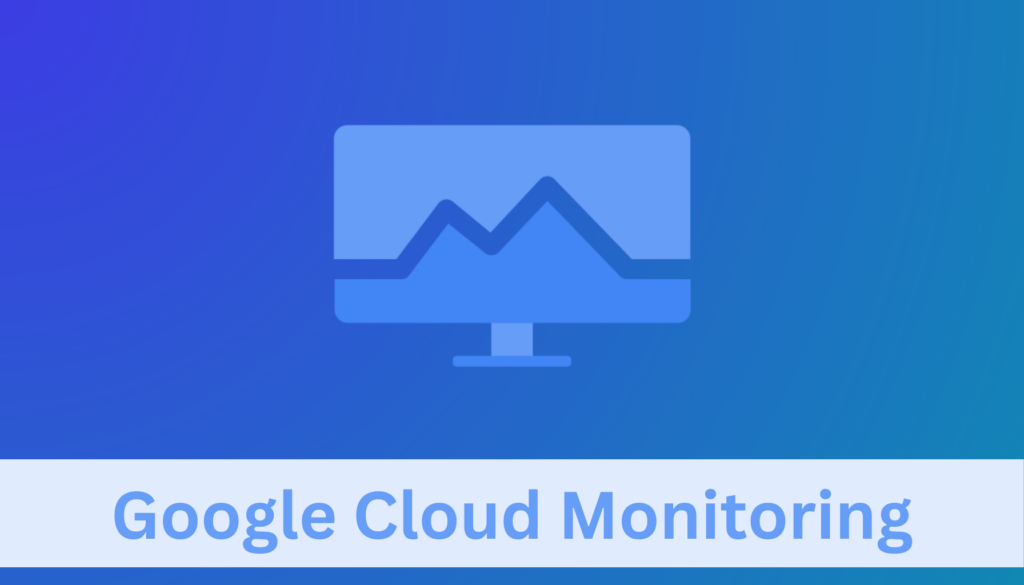What is Cloud Monitoring?
Google Cloud Monitoring, a key service within Google Cloud Platform (GCP), offers comprehensive monitoring capabilities for your cloud resources and applications. It focuses on ensuring that you have constant visibility into the performance, uptime, and overall health of your cloud infrastructure. This service simplifies cloud management by providing real-time data insights, which are critical for promptly identifying and resolving issues.
Whether you’re running complex applications or just starting with cloud computing, Cloud Monitoring enhances operational efficiency by streamlining the process of performance tracking and resource management. It’s designed to be intuitive, ensuring that you, as a user, can easily monitor your cloud environment without the need for extensive technical expertise.
What are the features of Google Cloud Monitoring?
1. Real-time Monitoring
Real-time monitoring is a pivotal feature of Cloud Monitoring. It allows you to track the performance and health of your applications and infrastructure in real time. This feature provides immediate visibility into various metrics like CPU usage, memory consumption, and network traffic. Real-time data is crucial for detecting issues as they occur, enabling prompt responses to prevent potential downtimes or performance degradation.
2. Alerting System
The alerting system in Cloud Monitoring is designed to notify you of any anomalies or predefined conditions in your cloud environment. You can customize alerts based on specific metrics or system states, ensuring that you are immediately informed of critical issues. This proactive notification system helps in maintaining the reliability and performance of your applications and services.
3. Dashboard and Visualization Tools
Cloud Monitoring offers a comprehensive set of dashboard and visualization tools. These tools provide a user-friendly interface for viewing and analyzing your cloud resources’ data. Customizable dashboards allow you to tailor the information display according to your specific needs, making it easier to interpret complex data sets and identify trends or anomalies.
4. Integration with GCP Services
This service seamlessly integrates with other GCP services, enhancing its utility. Integration with services like Google Compute Engine, Google Kubernetes Engine, and Google Cloud Storage ensures that you can monitor and manage all your cloud resources from a single platform. This integration simplifies the process of tracking resource usage across various services and provides a holistic view of your cloud environment.
5. Monitoring and Analysis
Monitoring and analysis tools are central to Cloud Monitoring. These tools offer in-depth insights into your cloud resources’ performance and usage patterns. By analyzing historical data, you can identify trends, optimize resource allocation, and plan for future requirements. These tools also assist in troubleshooting issues by providing detailed logs and metrics.
6. Custom Metrics and Logs
Cloud Monitoring allows you to create custom metrics and logs, offering flexibility in monitoring specific aspects of your applications and infrastructure. Custom metrics enable you to track unique parameters that are crucial for your environment, while custom logs help in detailed analysis and debugging. This customization adds a layer of depth to your monitoring capabilities, tailored to your specific operational needs.
Google Cloud Monitoring Pricing Overview
Pricing Components
Cloud Monitoring has a flexible pricing structure that caters to various user needs. It allows you to pay for only the resources used. Key components include charges for metric data ingested, API calls made, and incident management services. Each component is billed differently:
- Metric Data Ingestion: Charges are based on the volume of data collected from your cloud resources.
- API Calls: Costs are incurred for the number of API calls made within the monitoring service.
- Incident Management Services: This includes charges for alert notifications sent through email, SMS, or other integrations.
What is included in Cloud Monitoring Free Tier?
The free tier in Cloud Monitoring provides certain benefits without any cost, making it an attractive option for small-scale users or those in the early stages of cloud adoption:
- Basic Monitoring: Access to a core set of monitoring features free of charge.
- Limited API Calls: A specific number of API calls per month are available at no cost.
- Basic Incident Management: Basic alerting and incident management features are included in the free tier.
Understanding these pricing components and models helps you make informed decisions about using Cloud Monitoring in the most cost-effective way for your specific needs.
How to Perform Cost Optimizations in Google Cloud Monitoring?
Optimizing costs in Cloud Monitoring involves strategic use of its features to balance performance with expenditure. This section outlines strategies to maximize efficiency while minimizing costs.
1. Efficient Resource Utilization
Efficient use of resources is crucial. Monitor resource usage metrics to identify underutilized instances or services. Scaling down or shutting off these resources can lead to significant cost savings.
2. Alert Configurations
Configure alerts to monitor cost-related metrics. This helps in identifying unexpected spikes in usage or cost, allowing for quick adjustments. Efficient alert management ensures you’re only notified of critical events, reducing unnecessary overheads.
3. Usage Metrics Analysis
Regular analysis of usage metrics can reveal patterns and trends. Use this data to optimize the allocation of resources. For instance, if certain resources are consistently underutilized, consider scaling them down.
4. Scheduled Monitoring
Implement scheduled monitoring for non-critical resources. By monitoring these resources only during peak usage times, you can save costs associated with continuous monitoring.
5. Custom Metrics Optimization
While custom metrics are powerful, they can also be costly. Regularly review and optimize your custom metrics. Remove redundant or non-essential metrics to keep costs in check.
6. Utilizing Free Tier Resources
Make the most of the free tier offerings in Cloud Monitoring. For small-scale operations or test environments, the free tier might be sufficient, thus eliminating additional costs.
By implementing these strategies, you can effectively manage and optimize your costs in Cloud Monitoring. Regularly reviewing and adjusting your usage and monitoring patterns in line with these strategies can lead to significant cost savings without compromising performance or capabilities.
Conclusion
Cloud Monitoring stands out as a robust and versatile tool for real-time monitoring and management of cloud resources. Its comprehensive features, from real-time data insights to customizable alert systems, that satisfy a wide range of monitoring needs. While navigating its pricing structures, remember to leverage cost optimization strategies for efficient resource utilization. For the best results and tailored solutions, consulting with cloud professionals is advisable to fully harness the capabilities of Cloud Monitoring in your specific context.
Ready to Optimize Your Google Cloud Monitoring Usage?
[Reach out for specialized guidance] to ensure your setup is both cost-effective and high-performing.

